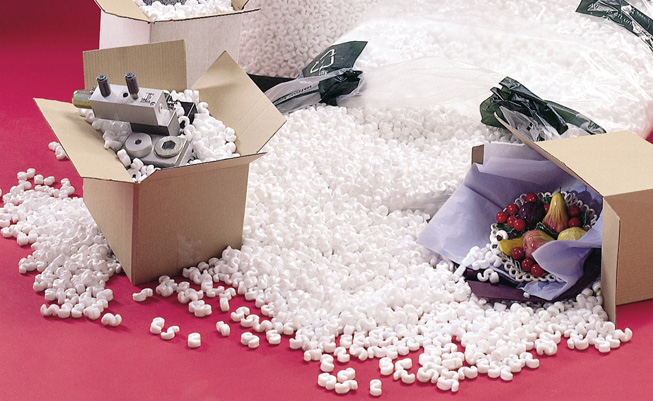A complete and utter history of loose fill packaging. Part One.

There was a lot of interesting stuff going on in late 1962. There was the Cuban Missile Crisis, of course, and the start of a ‘big freeze’ that would leave Britain covered in snow and without a frost-free night until March. November, meanwhile, witnessed the first mention in the media of the term ‘personal computer’, although it’s doubtful that the journalist responsible could have even begun to have grasped what the concept would encompass 50 years later.
The Beatles released their first single, ‘Love Me Do’, on October 5, coincidentally on the very same day that the first James Bond film, Dr No, had its world premiere. Both have since become part and parcel of the cultural landscape, and their respective 50th anniversaries saw both births rightly lauded as significant landmarks.
It was a huge disappointment when, despite my efforts to raise its profile, the 50th anniversary on 21 December of my new hero, Robert E Holden’s application for a patent for his ingenious loose fill packaging, wasn’t celebrated or marked in quite the same way. That seems slightly unfair: The Beatles may have broken new boundaries in popular music, and James Bond may have saved the world from unscrupulous megalomaniacs on innumerable occasions. Yet without packing peanuts, the world would today be awash with the shards of smashed pottery, shattered glassware and broken dreams.
But isn’t polystyrene foam bad for the planet?
Well, yes, but hindsight’s a wonderful thing. In those innocent times, however, plastic was still seen as ‘a good thing’, so the use of 100% virgin polystyrene resin to make void fill did not strike anyone as reckless, ill-considered or unecological. On the contrary, its resilience and permanence were seen as positive benefits, along, of course, with the fact that it was cheap to make and carried out its alloted task splendidly.
And anyway, it’s not as though we’re marking the invention of polystyrene itself, or even expanded polystyrene foam; both had already been around for a number of years. It’s a clever adoption and application of their properties that are being praised here.
The polystyrene itself was soft, light and an effective insulator, while the cellular structure, as Holden astutely points out in his patent application “provides the members with resiliance so that they cushion against shock and vibration, and resist crushing or permanent deformation”. The peanut shape, on the other hand, ensured that the individual ‘members’ flowed freely when loose, yet tightly interlocked when compressed, so that nothing packed within could move. Genius.
An apology
Last time I promised that this portion of our story would include more food. I’m afraid that events have overtaken me and that this must wait for another time. But, to make up to those disappointed at the lack of prandial packaging prose, let me pause for a moment in our tale to record one more incident of note that took place in 1962.
And that is that Planters, sensing that there was something in the air, introduced Dry Roast Peanuts to the world (an innovation that KP waited until the 1980s to follow). Coincidence? I think not…
Dave Smith
Latest posts by Dave Smith (see all)
- An environmental guide to plastic carrier bags - 22nd June 2015
- Millimetres and litres: a guide to choosing the right sized box - 11th June 2015
- The Davpack Christmas Sale – There’s More! - 12th November 2014
